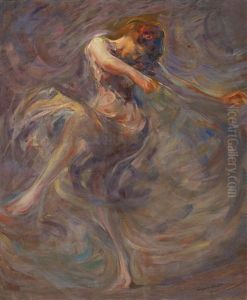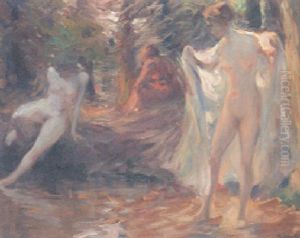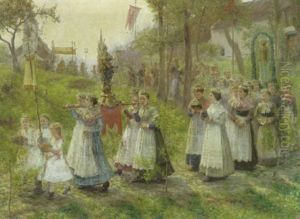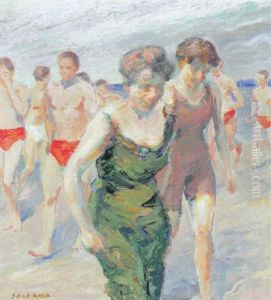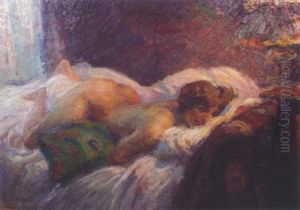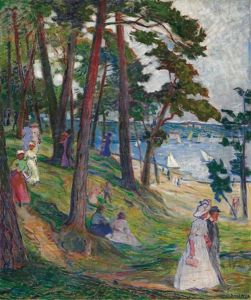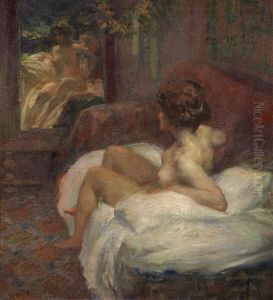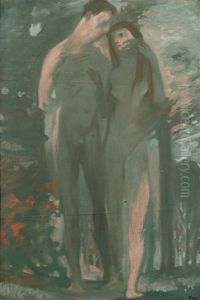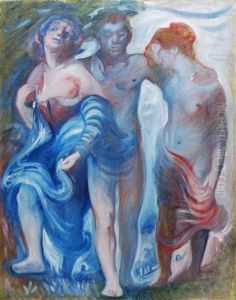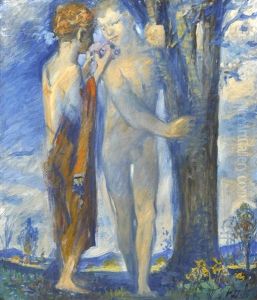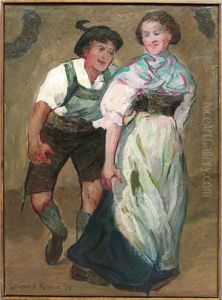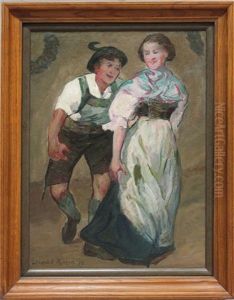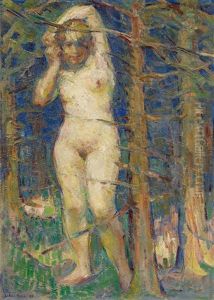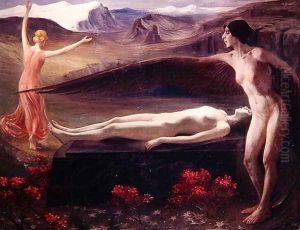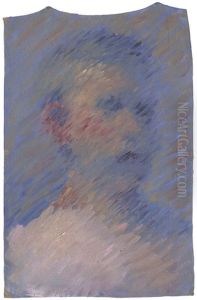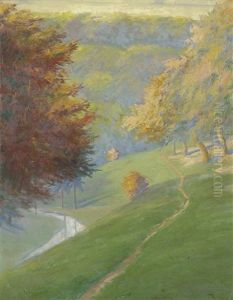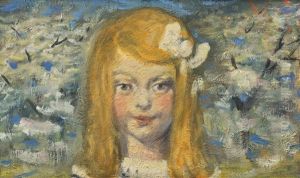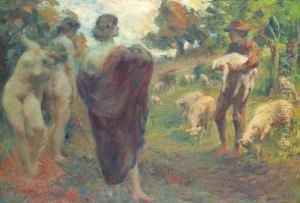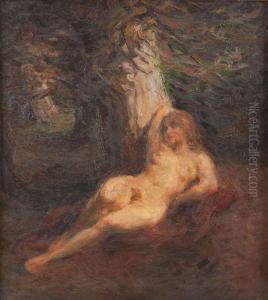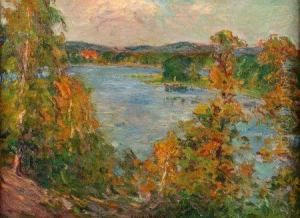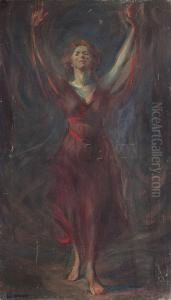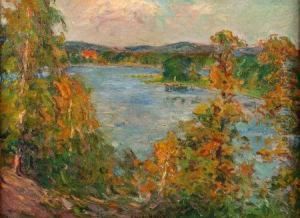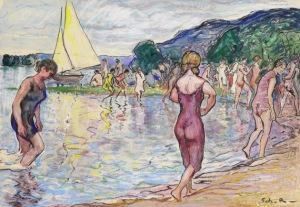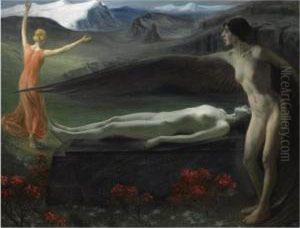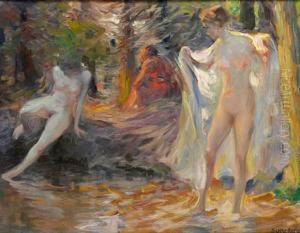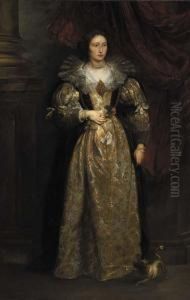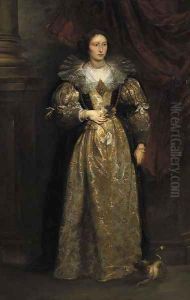Paul Schad-Rossa Paintings
Paul Schad-Rossa was a German painter known for his portraits, historical scenes, and allegorical works. Born on December 14, 1843, in Breslau, Prussia (now Wrocław, Poland), he displayed an early talent for art that was encouraged by his family. He initially studied at the Academy of Fine Arts in Breslau before moving to the Munich Academy of Fine Arts to further his education. Munich at the time was a vibrant center for artists, and Schad-Rossa was influenced by the city's rich cultural scene.
During his time in Munich, Schad-Rossa developed a style that integrated elements of Romanticism with the emerging Realist movement. His works often depicted scenes of German history and mythology, which were popular themes during the 19th century as Germany sought to forge a national identity. In addition to historical subjects, Schad-Rossa was a respected portraitist, capturing the likeness of many notable figures of his time.
Throughout his career, Schad-Rossa exhibited his works in various art shows and received several commissions. His paintings were characterized by their detailed realism, vibrant colors, and often dramatic lighting, which emphasized the emotional content of the scenes. Despite his success, Schad-Rossa faced personal challenges, including the loss of his wife and children, which affected him deeply.
The latter part of his life saw a decline in his artistic output, likely due to these personal tragedies as well as changes in artistic tastes moving away from the styles he was known for. Paul Schad-Rossa passed away on December 25, 1906, in Munich, leaving behind a body of work that, while not widely known today, contributed to the rich tapestry of 19th-century German art. His paintings can be seen in various museums and collections in Germany and provide insight into the era's aesthetic and cultural values.
